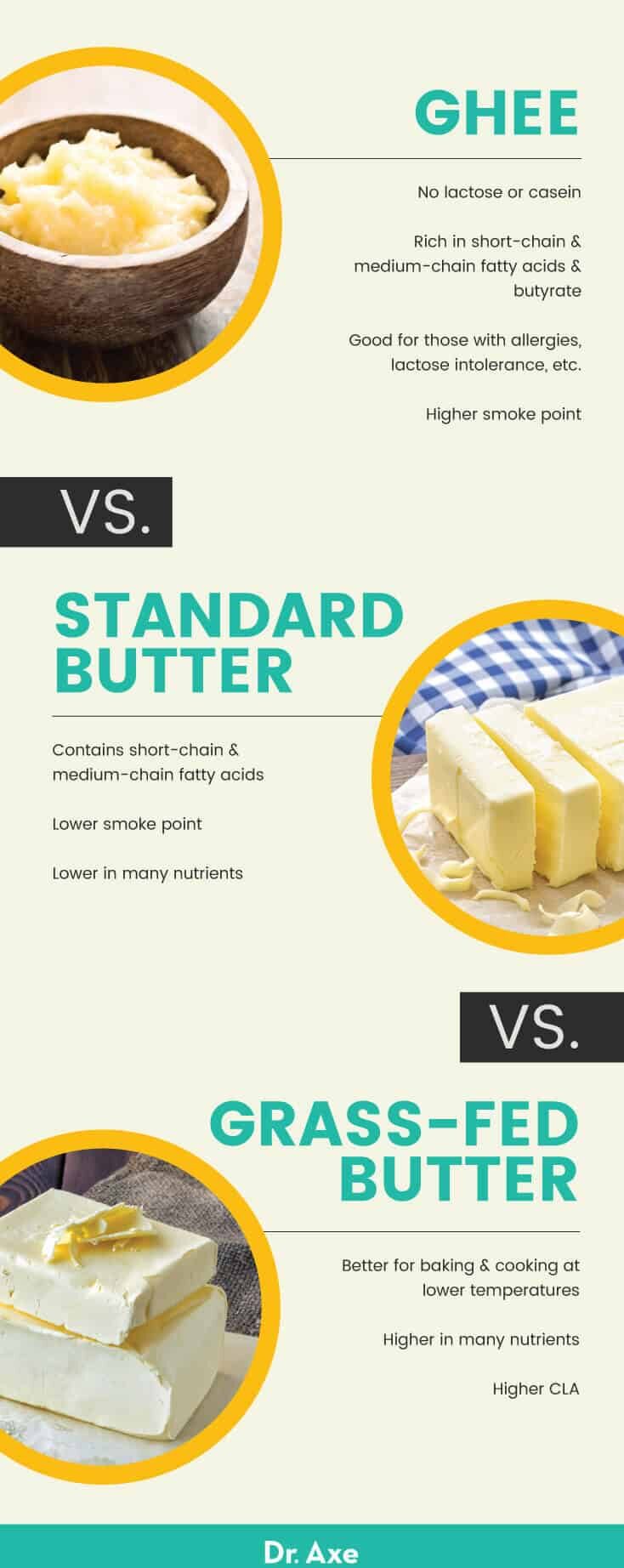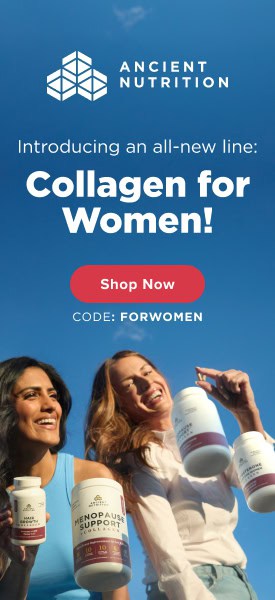This Dr. Axe content is medically reviewed or fact checked to ensure factually accurate information.
With strict editorial sourcing guidelines, we only link to academic research institutions, reputable media sites and, when research is available, medically peer-reviewed studies. Note that the numbers in parentheses (1, 2, etc.) are clickable links to these studies.
The information in our articles is NOT intended to replace a one-on-one relationship with a qualified health care professional and is not intended as medical advice.
This article is based on scientific evidence, written by experts and fact checked by our trained editorial staff. Note that the numbers in parentheses (1, 2, etc.) are clickable links to medically peer-reviewed studies.
Our team includes licensed nutritionists and dietitians, certified health education specialists, as well as certified strength and conditioning specialists, personal trainers and corrective exercise specialists. Our team aims to be not only thorough with its research, but also objective and unbiased.
The information in our articles is NOT intended to replace a one-on-one relationship with a qualified health care professional and is not intended as medical advice.
Grass-Fed Butter: 7 Benefits that May Surprise You
October 28, 2024

Butter has been a staple in diets around the world for centuries, but some wonder: Is butter bad for you? Many people would quickly tell you that it is and that you have to reduce your intake or even avoid it all together, especially if you have high cholesterol or heart problems. But what if I told that high-quality, real butter — especially grass-fed butter nutrition — can actually be health-promoting in a variety of ways?
In the United States, it’s estimated that butter consumption is more than 2 billion pounds per year. The European Union is actually much higher in butter consumption, with Statista noting European consumption of butter remains one of the highest rates in the world.
Americans also consume margarine, a less healthy, processed butter substitute.
However, butter nutrition, especially grass-fed butter nutrition, is pretty impressive, and it can actually be considered a healthy daily addition to your diet when consumed in moderation.
Nutrition facts
You’re likely familiar with butter, but do you ever wonder what is butter made of? When it comes to butter ingredients, there is only one.
Butter is a dairy product created by churning fresh or fermented cream to separate the butterfat from the buttermilk. It’s about 80 percent fat and contains around 400 different fatty acids and a nice dose fat-soluble vitamins too.
Butter is most commonly sourced from cows, but it’s also possible to make butter from the milk of other mammals, like goats, sheep, buffalo and yaks.
The color of butter can range from almost stark white to deep yellow. The yellow variety is typically considered the healthiest, which is the result of cows (or other mammals) being grass-fed.
When a cow lives on a diet primarily consisting of grass, the butter is made from the cream of cows getting a diet rich in beta-carotene (the form of vitamin A found in plants).
Unsurprisingly, grass-fed butter nutrition is even more impressive than regular butter nutrition.
For instance, a one-tablespoon serving of pasture-raised, grass-fed butter (about 14 grams) contains approximately:
- Calories: 100
- Total Fat: 11 g
- Saturated Fat: 8 g
- Sodium: 100 mg (4% DV*)
*Daily Value: Percentages are based on a diet of 2,000 calories a day.
Meanwhile, a one-tablespoon serving of regular butter without salt (approximately 14.2 grams) provides about:
- Calories: 102
- Total Fat: 11.5 g
- Saturated Fat: 7.2 g
- Polyunsaturated Fat: 0.4 g
- Monounsaturated Fat: 3.3 g
- Protein: 0.1 g
- Sodium: 1.6 mg (0.1% DV*)
- Vitamin A: 97.1 mcg (11% DV)
*Daily Value: Percentages are based on a diet of 2,000 calories a day.
Butter may not really provide you with protein or fiber, but it also doesn’t contain any sugar, carbs or health-hazardous trans fats.
People are often terrified of saturated fat, but when saturated fat is obtained from healthy sources in moderation, like grass-fed butter and coconut oil, it provides the body much-needed fuel and helps with blood sugar stability.
Grass-fed butter vs. ghee vs. standard butter
Let’s look at how the different butter options like ghee and standard butter not sourced from grass-fed cows compare to grass-fed butter. Ghee has a unique nutrition profile without any lactose or casein, but it’s rich in short-chain and medium-chain fatty acids and butyrate.
For people who are sensitive to lactose or casein, they can use ghee because the process removes these allergens. If you’ve been told to stay away from dairy and butter, you can experiment with grass-fed ghee.
Both butter and ghee contain medium- and short-chain fatty acids. Butter contains 12 percent to 15 percent medium- and short-chain fatty acids, while ghee contains 25 percent or greater.
The body actually metabolizes these fats in a different manner than long-chain fatty acids.
The result? Medium and short chains are not associated with cardiovascular disease.
Ghee has a higher smoke point than butter so ghee is more stable at high heat. Meanwhile, grass-fed butter is better for baking and cooking at lower temperatures.
What about grass-fed butter compared to your standard butter from grain-fed cows? Grass-fed butter nutrition is notably higher in many nutrients than butter from cows that are fed grain-based diets.
Studies have shown that the milk from grass-fed cows is significantly richer in fatty acids and fat-soluble vitamins. This means that the butter made from the milk of grass-fed cows is also higher in all of this good stuff.
Science has also shown that milk (and therefore butter) from grass-fed cows is higher in conjugated linoleic acid (CLA), a seriously healthy immune booster and disease fighter.
Overall, butter from grass-fed cows is simply a healthier choice than standard butter.

Health benefits
1. Anti-inflammatory
One of the highlights of butter nutrition, especially grass-fed butter nutrition, is its high level of butyric acid. This health-promoting acid is only found in a few foods, and butter is one of them.
By consuming grass-fed butter, you directly increase your intake of butyric acid, which science has shown can help decrease inflammation. One of the specific ways it has been shown to decrease inflammation is in the intestines of people with Crohn’s disease.
In addition, the healthy fats in butter have displayed anti-inflammatory effects and hold antioxidants that also combat inflammation.
2. Better for heart health
A heart study published in the journal Epidemiology looked at the effects of butter and margarine on cardiovascular disease. What did researchers find?
Margarine consumption increased the risk of coronary heart disease, while butter intake was not at all associated with coronary heart disease occurrence.
Another 16-year prospective study published in the European Journal of Clinical Nutrition in 2010 evaluated whether the intake of dairy products or related nutrients is linked with mortality due to cardiovascular disease (CVD). The researchers found that overall the intake of dairy products was not associated with dying from CVD or cancer.
In comparison to the study subjects with the lowest full-fat intake of dairy products, the participants with the highest intake (median intake was 339 grams per day) actually had a reduced death rate due to CVD after adjustment for calcium intake and other variables.
3. Excellent vitamin A source
One of the many beneficial vitamins we get from butter is vitamin A, which has a wide range of functions for our bodies. Grass-fed butter has even more vitamin A than regular butter thanks to the cow’s healthier grass-centric diet.
4. Energy-boosting and appetite-suppressing MCTs
You can get your dose of short- and medium-chain triglycerides (MCTs) from butter, which are great for supporting your immune system and boosting metabolism. The MCTs found in butter (and coconut oil) are able to be converted immediately into fuel for your body’s muscles and organs.
MCTs are changed into something a lot more useful than body fat: energy. MCTs have also been shown to suppress the appetite, which is excellent for anyone who is looking to lose weight or just lower their overall calorie intake.

5. High in anti-cancer CLA
If your butter is sourced from cows that feed on green grass, it can contain high levels of CLA. This is a compound that potentially can help provide protection against different types of cancer and helps the body store muscle instead of fat.
A 1999 study found that grass-fed cows had much high levels of CLA. Specifically, grass-fed cows with no supplemental feed had 500% more conjugated linoleic acid in milk fat than cows fed typical dairy diets.
6. Rich in vital cholesterol
Some of the most important reasons you need cholesterol include the fact that it is needed for healthy cellular function. It’s also required to make key hormones and vital to brain and nervous system development and function.
You might not even be aware that low cholesterol may play a role in serious health problems like cancer, depression and anxiety. It’s also considered a risk factor for violent behavior, suicide and primary intracerebral hemorrhage, as well as low birth weight or premature birth in pregnant women.
Grass-fed butter in moderation offers an ample dose of daily cholesterol that can hopefully help you ward off all these major health concerns.
7. Source of arachidonic acid
A study conducted on butter fat way back in 1934 at Ohio State University’s Laboratory of Physiological Chemistry showed how a “highly unsaturated acid” known as arachidonic acid (ARA) is found in butter.
Why is this significant? Studies have shown multiple health benefits associated with arachidonic acid.
One study published in 2016 in the journal Nutrients focused on arachidonic acid’s essential role in infant development as well as immunity. ARA is a precursor to several of the human body’s signaling molecules that are extremely important to optimal immune response and, hence, overall immune system function.
In addition, according to this research ARA is critical for infant growth, brain development and overall health.
How to use
The best butter:
- Comes from grass-fed cows
- Is organic
- Is unsalted or sea-salted (unfortunately, many organic butters often use inferior salt rather than sea salt)
- Is made from raw milk or fermented milk
It’s pretty much a guarantee that your local health store has organic, grass-fed butter, and it now seems like pretty much every chain grocery store carries grass-fed butter these days as well. Finding butter that’s grass-fed, organic as well as made from raw milk can be trickier, but I would opt for it if you find it.
It’s more likely that you’ll find cultured butter made from fermented milk. You also might be able to find some fresh grass-fed butter at your local farmers market.
Unsalted butter is often far preferred for cooking while salted butter is the way to go when it comes to simple foods like a piece of buttered toast.
Using salted butter in cooking can throw off the flavoring of your final products. This is especially true when it comes to baking when extra salt is not desirable.
If you’re baking, you pretty much always want to opt for unsalted grass-fed butter unless the recipe says otherwise.
You can use salted grass-fed butter in cooking when you’re actually looking to add some salt to your dish, like with fish, meat, vegetables, stews and soups. Just make sure to leave out or use less sea salt to balance out the use of salted butter.
Butter is solid at room temperature and liquid when heated. It’s not meant for high-heat cooking since its milk solids burn quickly.
When you use it in cooking, butter adds richness. Many cooks suggest that you balance this richness with the addition of an acidic, clarifying ingredient, like lemon juice.
Risks and side effects
Lactose intolerance is defined as the inability to digest lactose, the sugar primarily found in milk and dairy products. It’s caused by a shortage of lactase in the body, an enzyme produced by the small intestine that’s needed to digest lactose.
Some people who are mildly lactose-intolerant do fine with butter because it only contains trace amounts of lactose, but if you’re really bothered by lactose, it’s a good idea to avoid butter.
Instead you can opt for clarified butter (ghee) because it contains even less lactose than butter or no lactose at all.
Final thoughts
- Real butter from grass-fed cows is actually a healthy food that offers a lot more benefits than you would expect. The term “healthy butter” is especially true when you purchase butter that is grass-fed and organic. Bonus points if it’s also from raw milk and local.
- Grass-fed butter nutrition is certainly better than processed, fake margarine, and grass-fed butter benefits include its anti-inflammatory, heart-healthy, energy-boosting, appetite-suppressing prowess.
- Just like grass-fed beef, grass-fed butter provides a wealth of delicious ways to improve your health.



